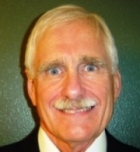
 Greg Lease Executive Coach
Greg Lease Executive CoachHome
About
Executive Coaching
Leadership Coaching
Team Coaching
Group Coaching
Organizational Change
Life Coaching
ICF Code of Ethics
Organizational Change
Everybody has accepted by now that change is unavoidable. But that still implies that change is like death and taxes — it should be postponed as long as possible and no change would be vastly preferable. But in a period of upheaval, such as the one we are living in, change is the norm. Peter Drucker, on management challenges of the 21st century
We live in a world where the rate and scope of change surrounding us is rapidly increasing. Organizations which may have operated for years or decades without significantly changing are being challenged by both their clientele and funding sources to adapt to change around them and evolve to meet the needs of the future.
Of all the nonprofit organizations in the United States, about half have experienced executive director transition in the last decade, and most of the remaining half anticipate doing so in the next decade. Often nonprofits experience a rate of personnel turnover that is higher than optimal, and compete with the for-profit sector to attract and retain talented leaders and staff.
There are also often unique challenges to navigate and overcome to bring about organizational change in nonprofit organizations. Nonprofits, like every other group of people working together, develop organizational cultures with unspoken and often unrecognized rules and expectations (often characterized as undiscussable "elephants in the room"), which exert a strong force to resist change in the structure or direction of the organization. Strong, courageous leadership is essential to address all of these factors. Successful organizational change without undue disruption of mission requires a high level of resiliency, compassion, consistency, wisdom and commitment to clear vision and core values from the organization's leaders.
Leadership and team coaching are valuable tools in the preparation for and execution of organizational change initiatives. I work with you to understand the forces already at work to maintain the status quo, and then to develop strategies to manage these forces in order to use the existing strengths of the organization to effect the desired change. In this way, obstacles can be anticipated and avoided, or strategies developed to deal positively with these as they arise. The coach is able to help leaders shift perspective in the face of challenges throughout the change process in order to provide the best leadership possible.
The fantasy that somehow organizations can change without personal change, and especially without change on the part of people in leadership positions, underlies why many change efforts are doomed from the start. Peter Senge
